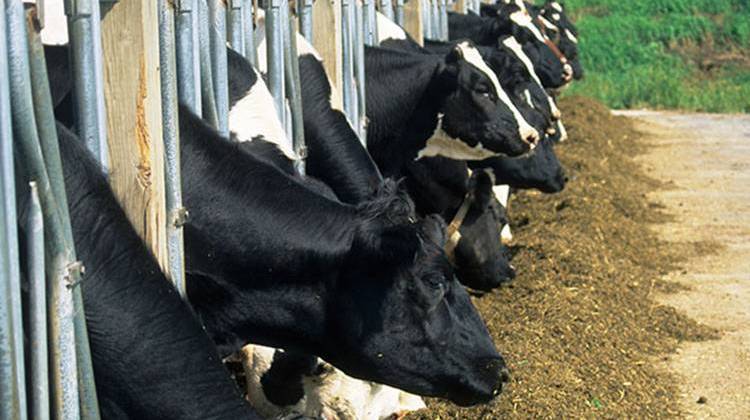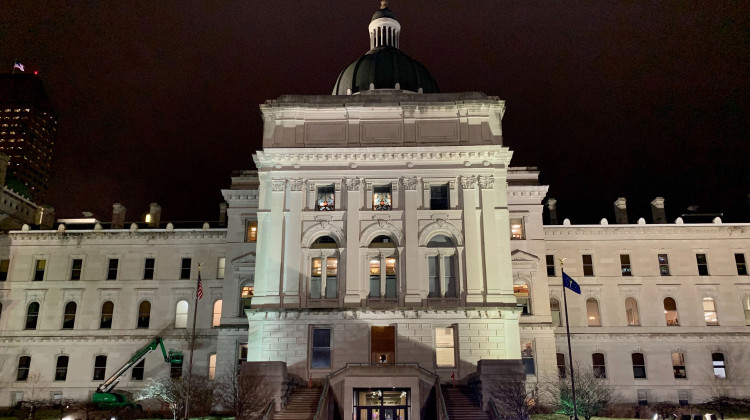
Cows lined up in stanchions at confined animal feeding operation (CAFO).
Wisconsin Department of Natural ResourcesWhite County, just north of West Lafayette, is in the process of designating a mandatory distance between a confined animal feeding operation, or CAFO, and a body of water. This is the first regulation of its kind in the state.
The White County Area Planning Commission wrote the ordinance back in April. The rule creates a mile and a half buffer zone between CAFOs and the county’s major waterways.
The distance means less animal manure running into the water. A one-mile buffer from municipalities already exists for CAFOs.
Joe Rogers, the Area Planning Commission’s executive director, says the county wanted to establish an equivalent setback for the residential areas surrounding the lakes. So they measured how far those residences extended from the lakeshore.
“In almost all cases it was a half mile or less,” Rogers says. “So we took the half mile of the dense, residential population, added the mile on top of that half mile, and that’s how we got to the mile and a half.”
That resulted in the state’s first setback for a waterway. The state sets a minimum setback for CAFOs of 300-feet from municipalities, leaving it up to the counties to create stricter rules.
Municipal legislative bodies in White County have until July 12 to approve or deny the rule. Rogers expects it will be adopted without objection.
 DONATE
DONATE






 View More Programs
View More Programs

 Support WFYI. We can't do it without you.
Support WFYI. We can't do it without you.